A dishwasher that doesn’t dry dishes properly can quickly turn from a convenient appliance into a source of frustration. Wet dishes can lead to extra time and effort spent hand-drying them before putting them away, hindering the efficiency you expect from your dishwasher.
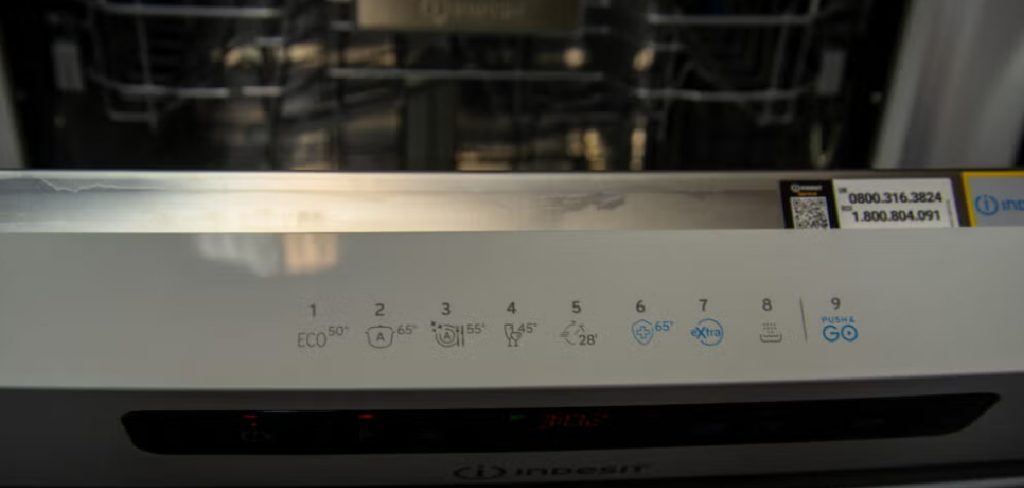
This issue may stem from several underlying causes, such as a malfunctioning heating element, improper loading techniques, or insufficient rinse aid levels. Ignoring these problems can lead to more significant appliance inefficiencies over time. Addressing the issue promptly ensures that your dishwasher functions as intended and consistently delivers clean, dry dishes.
This article aims to provide a practical step-by-step guide on how to fix dishwasher not drying. With these troubleshooting tips, you can identify and resolve common causes, restoring your dishwasher’s ability to dry dishes effectively and eliminating the hassle of post-wash drying.
Understanding Common Causes of Drying Issues
Properly diagnosing why your dishwasher isn’t drying dishes begins with understanding the most common causes. Below are key factors that can impact drying efficiency:
Heating Element Problems
The heating element in your dishwasher plays a crucial role in drying dishes by warming the air inside the appliance during the drying cycle. If the heating element is faulty or not functioning correctly, your dishwasher may not generate enough heat to evaporate the water on the dishes. This can leave them wet and increase drying time significantly. Inspecting and replacing a malfunctioning heating element is essential to restoring proper functionality.
Improper Loading
Loading dishes incorrectly can obstruct airflow and heat distribution, both of which are critical for effective drying. Overlapping dishes, placing large items inappropriately, or blocking spray arms can cause water to remain on the surfaces of your dishes.
To optimize drying, ensure adequate spacing between items and avoid overcrowding. Placing plastic items on the top rack can also help prevent warping from heat while promoting better airflow.
Rinse Aid Shortage
Rinse aid is an essential component that improves dishwater sheeting, facilitating quicker evaporation during the drying cycle. Water droplets often cling to dish surfaces without sufficient rinse aid, resulting in wet dishes. Regularly check rinse aid levels and refill as necessary to ensure better drying performance.
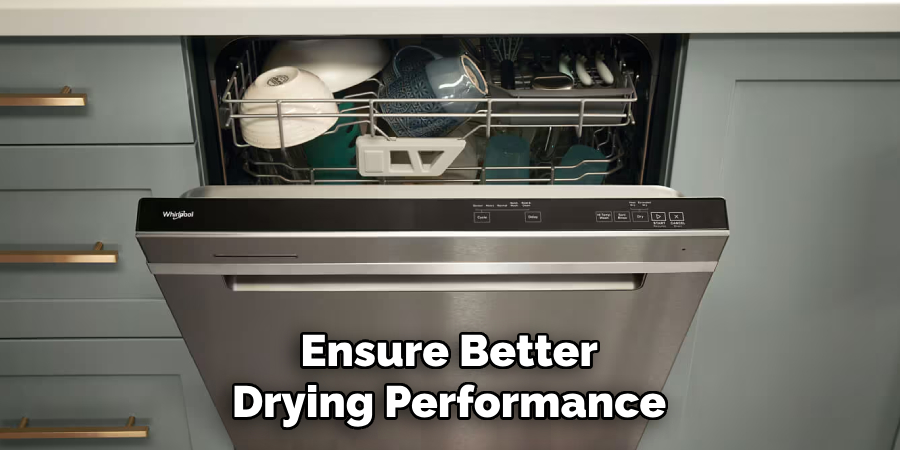
Ventilation Issues
Proper ventilation is critical for removing humid air during the final drying phase. A blocked vent or an improperly functioning vent system can trap moisture inside the dishwasher, dampening your dishes. Ensuring the vent is clear and that the dishwasher has good airflow during the drying cycle is vital for achieving fully dry dishes.
Materials and Tools Needed
Tools to Check and Fix the Dishwasher
- Multimeter: Useful for testing electrical components like the heating element to identify any malfunctions.
- Screwdriver: Necessary for removing panels or accessing various internal parts of the dishwasher.
- Replacement Parts: In case repairs are needed, essential items such as a new heating element, rinse aid dispenser, or other components.
Cleaning Supplies
- Dish Detergent: Used for routine cleaning of the dishwasher’s interior to maintain its performance.
- White Vinegar: Ideal for deep cleaning and removing built-up residue from the dishwasher’s surfaces and components.
- Baking Soda: An effective tool for odor removal and light cleaning tasks to keep the dishwasher fresh.
Having the right tools and cleaning supplies on hand ensures that diagnosing and resolving issues with your dishwasher is straightforward and efficient. Regular maintenance and proper use of these materials can also help prevent future problems.
How to Fix Dishwasher Not Drying: Check and Clean the Heating Element
The heating element in your dishwasher plays a critical role in drying dishes and maintaining the proper temperature during cycles. Regularly checking and cleaning this component can help prevent inefficiencies or malfunctions.

How to Inspect the Heating Element
To begin, locate the heating element, which is typically found at the bottom of the dishwasher’s interior. Carefully examine it for visible signs of damage, such as cracks, wear, or corrosion. Discoloration or excessive residue buildup may also indicate problems that need to be addressed. Perform this inspection with the dishwasher powered off for safety.
Testing the Heating Element
If you suspect the heating element is malfunctioning, use a multimeter to test for continuity. Set the multimeter to the appropriate setting and place the probes on the terminals of the heating element. A working heating element will show continuity, while a broken one will not. If the results indicate the element is faulty, it must be replaced with a new one to restore functionality.
Cleaning the Heating Element
Over time, residue, minerals, or grease can accumulate on the heating element, affecting its performance. Use a soft cloth or sponge with mild dish detergent and warm water to gently wipe down the heating element. For tougher buildup, white vinegar or baking soda can be used to break down deposits.
Ensure the element is thoroughly cleaned and debris-free, as any obstruction can block even heat distribution and impact the dishwasher’s efficiency. Taking the time to inspect, test, and clean your heating element ensures the long-term reliability of your dishwasher, enabling it to perform optimally.
Check and Refill the Rinse Aid Dispenser
Understanding the Role of Rinse Aid
Rinse aid is key in ensuring your dishes come out of the dishwasher clean and dry. By reducing the surface tension of water on your dishes, the rinse aid helps water flow more smoothly and prevents droplets from forming. This not only reduces water spots but also enhances the drying process.
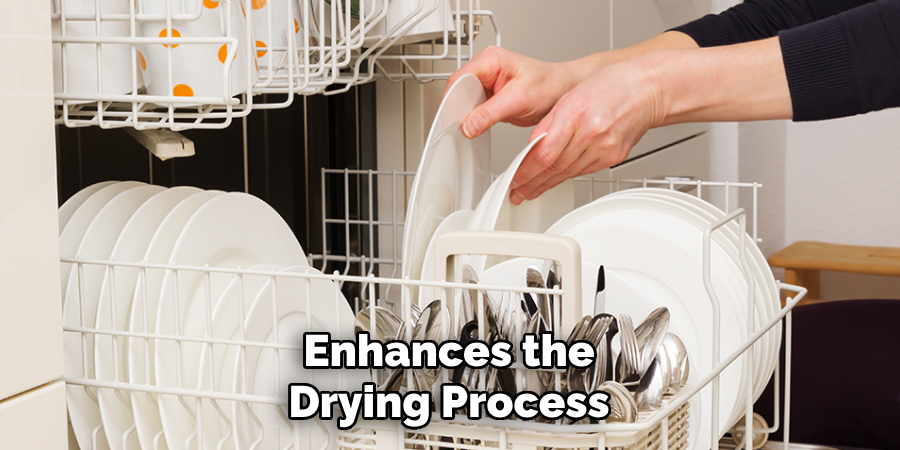
If your rinse aid levels are too low, the drying performance of your dishwasher will suffer, often leaving dishes wet or streaked. Regularly checking and refilling the rinse aid ensures optimal drying results and sparkling, spotless dishes.
Refilling the Rinse Aid
To refill the rinse aid, first locate the rinse aid dispenser, which is typically found near the detergent tray inside the dishwasher door. Depending on the design, open the dispenser by twisting the cap or opening the latch.
Pour a suitable rinse aid product into the dispenser until it reaches the fill line, taking care not to overfill. After filling, securely close the dispenser to prevent leaks. For best results, always use a rinse aid product recommended by the dishwasher manufacturer or labeled as compatible with your appliance.
Adjusting the Rinse Aid Dispenser
Some dishwashers are equipped with adjustable rinse aid dispensers, allowing you to regulate the amount of rinse aid released during a cycle. Experiment with the dispenser settings to find the best level for your water type and ensure optimal drying performance.
Adjusting the setting can make a noticeable difference in the overall effectiveness of your dishwasher’s drying process. Regular attention to rinse aid levels and settings will ensure consistently excellent results.
Proper Loading of the Dishwasher
Why Loading Matters
Proper dishwasher loading is crucial for achieving spotless, dry dishes at the end of each cycle. Incorrect loading can obstruct airflow and hinder proper heat distribution, leaving items wet or partially clean. Overcrowding or placing dishes in a way that blocks air vents can significantly affect drying, as the trapped moisture cannot evaporate efficiently. A well-loaded dishwasher ensures optimal cleaning and drying performance.
Tips for Proper Loading
To get the best results, follow these tips for loading your dishwasher effectively:
- Place dishes and cookware facing downward or at an angle to allow water to drain properly.
- Avoid stacking large items or overlapping dishes, as this can block both spray arms and air vents.
- Ensure there is enough space between each item to promote airflow and prevent water droplets from lingering.
- Delicate items such as glassware should be placed securely to avoid tipping over and trapping water.
Testing Proper Loading
Experimenting with different loading arrangements can help you identify the most efficient setup for drying. Try adjusting the placement and spacing of items over a few cycles to see what works best for your dishwasher and dishware. Proper loading not only enhances drying but also extends the life of your appliance.
Clean and Unclog the Dishwasher Vent
Locating the Vent
The dishwasher vent is usually located near the door or at the bottom of the appliance. It is crucial to release hot, moist air during the drying cycle, allowing your dishes to dry thoroughly. Refer to your dishwasher’s user manual if you’re uncertain about the exact location of the vent.
Signs of Blockage
A clogged vent can lead to poor airflow and inadequate drying performance. Common signs include persistent moisture on dishes after a cycle, a musty odor inside the appliance, or visible buildup around the vent. Accumulated debris, food particles, and grease are typical culprits of vent blockages.
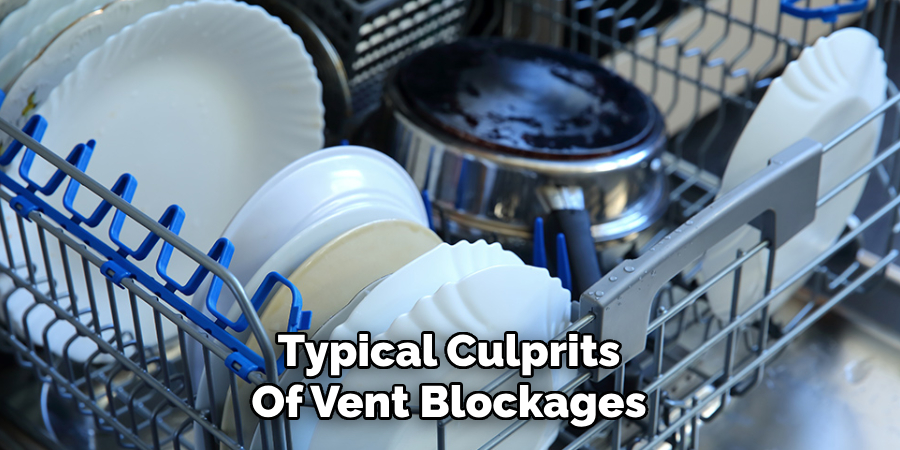
Cleaning the Vent
First, ensure the dishwasher is turned off and completely cool before starting maintenance. Use a small, soft brush or a damp cloth to clean the vent area gently, removing any obstructions. A mild dish soap solution can help dissolve buildup for more stubborn grease or grime.
Additionally, check the vent flaps to ensure they open and close properly during the drying cycle. If the vent mechanism appears damaged or stuck, consult a professional for repairs to restore optimal function. Regular vent cleaning is essential to maintain efficient airflow and improve your dishwasher’s drying performance.
Run a Cleaning Cycle with Vinegar
Why Clean the Dishwasher?
Over time, mineral deposits, soap scum, and grease can build up inside the dishwasher, impacting its cleaning performance and leading to unpleasant odors. Regular cleaning ensures the appliance operates efficiently and maintains its longevity.
How to Clean with Vinegar
Place a cup of white vinegar in a dishwasher-safe bowl or container and position it on the top rack to clean your dishwasher. Run the dishwasher on a hot water cycle without adding any detergent. The vinegar helps break down buildup, remove grease, and eliminate lingering odors.
Additional Cleaning Tips
For a deeper clean, sprinkle a layer of baking soda across the bottom of the dishwasher and run an additional short, hot water cycle. This will freshen the interior and neutralize odors. Don’t forget to clean the dishwasher filter regularly to remove trapped food particles and debris, ensuring maximum performance.
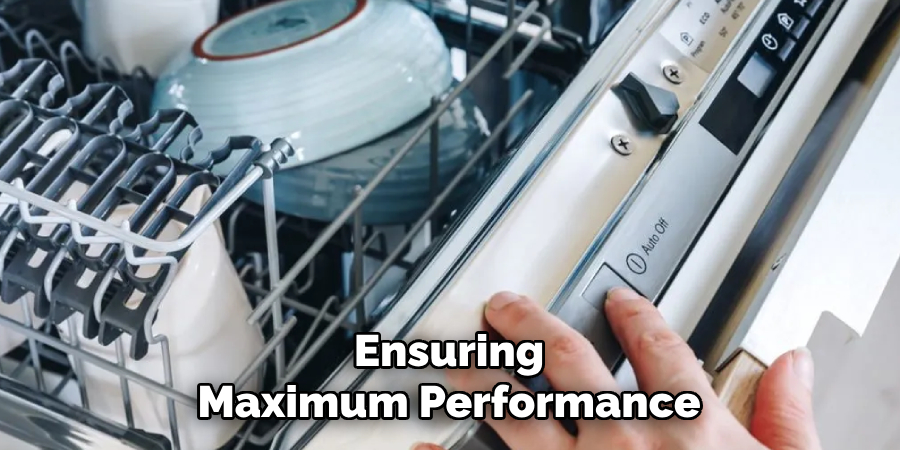
Conclusion
Fixing dishwasher drying issues involves a few simple yet crucial steps. Begin by inspecting the heating element to ensure it’s functioning correctly, and refill the rinse aid dispenser to enhance drying performance. Next, proper loading techniques should be focused on to allow optimal air circulation and clean the vent to prevent blockages. Finally, run a cleaning cycle with vinegar to tackle buildup inside the dishwasher.
Regular maintenance, like checking rinse aid levels and cleaning filters, can prevent future problems. By following these steps on how to fix dishwasher not drying, and consulting a professional if needed, you can restore your appliance’s efficiency.
Professional Focus
Angela Ervin, a former interior designer turned blogger, specializes in kitchen design and renovations. Through her website, she blends her passion for cooking with design expertise, sharing practical and creative ideas. Known for balancing functionality and beauty, Angela’s insightful content has made her a trusted voice in home design and lifestyle.
About the Author
Angela Ervin, an experienced interior designer and blogger, combines her passion for kitchen renovations with storytelling. Living in Petersburg with her family, she enjoys cooking and testing her projects firsthand. Known for her humor and relatable style, Angela shares creative, functional design insights through her content, making her a trusted voice in home design.
Education History
University: Virginia Commonwealth University
Degree: Bachelor of Fine Arts (BFA) in Interior Design
- Angela’s education at VCU focused on mastering core interior design principles, including spatial planning, color theory, materials selection, and sustainable design practices.
- She gained hands-on experience through studio projects and collaborative design exercises, which honed her ability to create functional and aesthetically pleasing environments.
- Her coursework also emphasized problem-solving and practical applications of design, preparing her for real-world projects like her self-directed kitchen renovations.
- The program’s strong foundation in both technical skills and creative expression shaped Angela’s ability to seamlessly integrate form and function in her work.
